2 October 2013 – 20 January 2014 Grand Palais Paris Clemenceau entrance
Félix Vallotton (1865-1925) had a foot in two centuries, two countries and two cultures. He was trained at the Julian Academy in Paris, the cradle of many Post-Impressionist artists and Nabis. Before he was thirty, he had won international renown for his woodcuts, small black and white images, often ferocious in their irony. Before touring the world, they created a sensation in the Paris avant-garde, winning Vallotton admission to the group of the Nabis and the friendship of its leading members.
The exhibition is organised by the Musée d’Orsay and the Réunion des musées nationaux- Grand Palais, Paris, in joint collaboration with the Van Gogh Museum, Amsterdam and the Mitsubishi Ichigokan Museum, Tokyo and Nikkei Inc. With special support from the Musées d’art et d’histoire, Genève and the Musée cantonal des Beaux-Arts, Lausanne.
Félix Vallotton, The Theatre Box, A gentleman and the Lady, 1909, oil on canvas, 46 x 38 cm, © Private collection, Switzerland
After 1899, he left woodcutting for painting, leaving over 1700 paintings when he died in 1925. He worked assiduously, in all genres: portraits, nudes, landscapes, still lifes and even history painting, producing huge mythological or allegorical scenes, or compositions inspired by the spectacle of modern warfare, in particular World War One. His style is easily recognisable by its slim paint layer, refined colours, precise outlines, bold framings, and flattened perspectives borrowed from Japanese prints and photography.
The Félix Vallotton. Fire Beneath the Ice exhibition - curators: Isabelle Cahn, chief curator at the Musée d’Orsay, Guy Cogeval, chairman of the Musées d’Orsay et de l’Orangerie, the Félix Vallotton Foundation in Lausanne represented by Marina Ducrey and Katia Poletti, curators - takes a fresh look at the artist’s work. In ten eloquently named sections, it explores the artist’s aesthetic, social and political motivations and his complex personality: Idealism and Purity of Line; Flattened perspectives; Repression and Lies; A Photographic Eye; “The Tragic Violence of a Black Spot”; Female Duets; Icy Eroticism; Opulent Substance; Modern Mythologies; This is War!
In each section, the works are grouped by affinity with the theme rather than chronogically or by genre. This transversal approach reveals the painter’s obstinate building of an highly personal and modern style, but nevertheless rooted in the long tradition of art. The exhibition therefore presents not only Vallotton’s best known masterpieces, but also paintings seldom or even never shown.
This thanks to the Musée d’Orsay’s rich collection, the exceptional loans granted by Swiss museums, the generosity of the major American and European museums and that of many private collectors, through the mediation of the Félix Vallotton Foundation in Lausanne.
The exhibition will also be shown at the Van Gogh Museum, Amsterdam, from 14 February to 1 June 2014, then at the Mitsubishi Ichigokan Museum, Tokyo from 14 June to 23 September 2014.

Félix Vallotton, Autoportrait à l'âge de vingt ans, 1885, huile sur toile, 70 x 55,2 cm, Lausanne, Musée cantonal des Beaux-Arts acquisition 1896, © Musée cantonal des Beaux-Arts de Lausanne / photo J.-C. Ducret

Félix Vallotton, Gertrude Stein, 1907, huile sur toile, 100,3 x 81,3 cm, Baltimore, The Baltimore Museum of Art, The Cone Collection, formed by Dr Claribel Cone and Miss Etta Cone of Baltimore, Maryland © The Baltimore Museum of Art / photo Mitro Hood

Félix Vallotton, Femmes à leur toilette, 1897, huile sur carton, 49 x 60,8 cm, Paris, musée d’Orsay © Fondation Félix Vallotton, Lausanne

Félix Vallotton, Le Bain turc, 1907, huile sur toile, 130,5 x 195,5 cm, Genève, Musées d’art et d’histoire de la Ville de Genève © musées d'Art et d'Histoire de la Ville de Genève / photo Bettina Jacot-Descombes

Félix Vallotton, Quatre torses, 1916, huile sur toile, 92 x 72,5 cm, Lausanne, musée cantonal des Beaux-Arts, acquis grâce au Prix de la Fondation de la Banque cantonale vaudoise, 1995 © musée cantonal des Beaux-Arts de Lausanne / Photo J.-C. Ducret
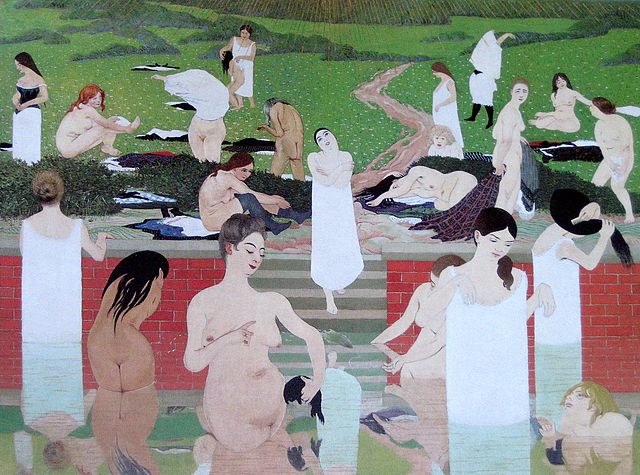
Félix Vallotton, Le Bain au soir d'été, 1892-1893, huile sur toile, 97 x 131 cm, Zurich, Kunsthaus Zürich, dépôt de la Fondation Gottfried Keller (acquis en 1965) © Kunsthaus Zurich 2013 / droits réservés
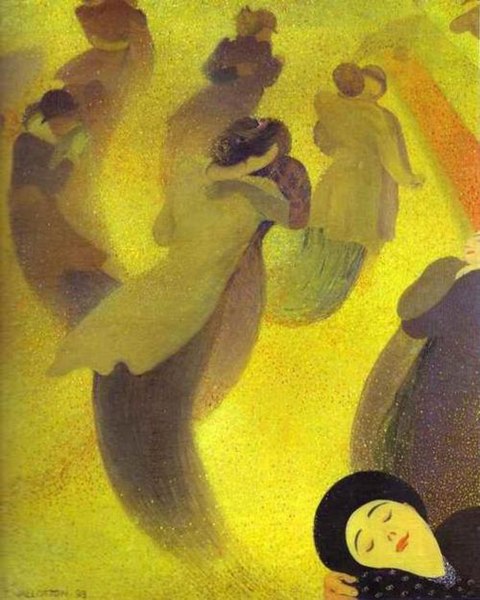
Félix Vallotton, La Valse, 1893, huile sur toile, 61 x 50 cm, Le Havre, MuMa - Musée d’art moderne André-Malraux, collection Senn © MuMa, Le Havre / photo Florian Kleinefenn

Félix Vallotton, La Chambre rouge, 1898, tempera sur carton, 50 x 68,5 cm, Lausanne, musée cantonal des Beaux-Arts, acquisition 1983 © musée cantonal des Beaux-Arts de Lausanne / Photo J.-C. Ducret
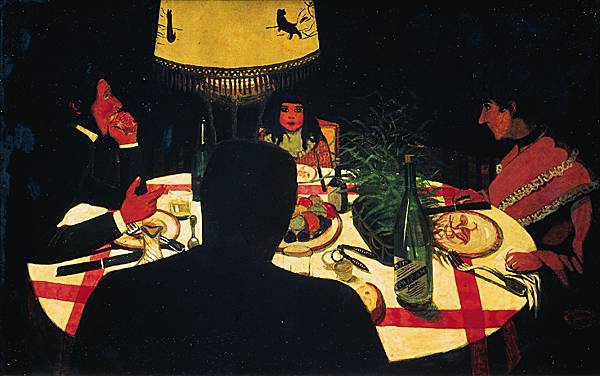
Félix Vallotton, Le Dîner, effet de lampe, 1899, huile sur carton marouflé sur bois, 58 x 90 cm, Paris, musée d'Orsay, © Rmn-Grand Palais (musée d'Orsay) / Adrien Didierjean
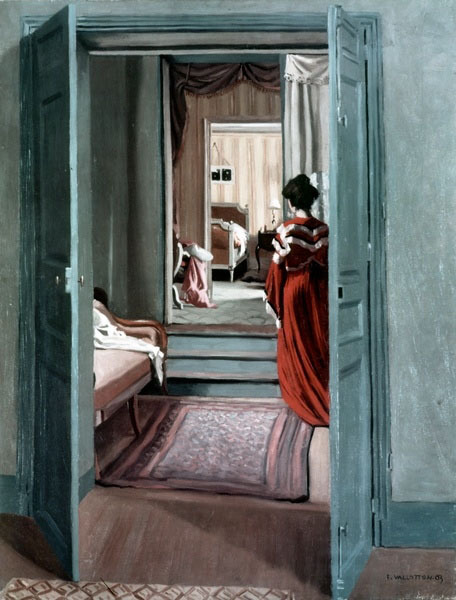
Félix Vallotton, Intérieur avec femme en rouge de dos, 1903, huile sur toile, 93 x 71 cm, Zurich, Kunsthaus Zürich, legs Hans Naef © Kunsthaus Zurich 2013 / droits réservés

Félix Vallotton, Le Provincial, 1909, huile sur toile, 50 x 53 cm, collection particulière © collection particulière / photo Reto Pedrini, Zürich

Félix Vallotton, Sur la plage, 1899, huile sur carton, 42 x 48 cm, collection particulière © Fondation Félix Vallotton, Lausanne

Félix Vallotton, Le Ballon, 1899, huile sur carton marouflé sur bois, 48 x 61 cm, Paris, musée d’Orsay, legs de Carle Dreyfus, 1953 © Rmn-Grand Palais (musée d'Orsay) / Hervé Lewandowski
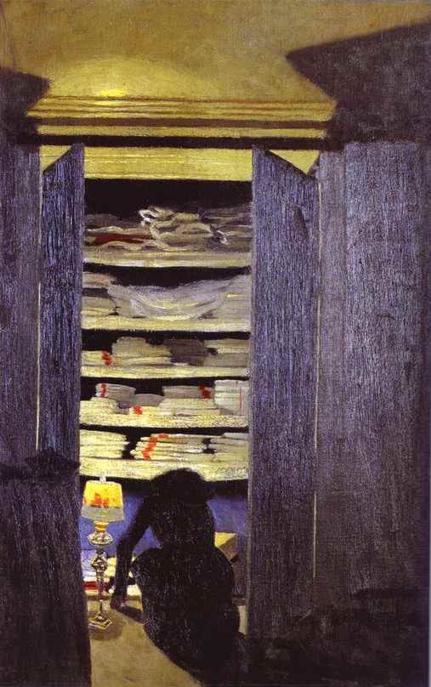
Félix Vallotton, Femme fouillant dans un placard, 1901, huile sur toile, 78 x 40 cm, collection particulière © Fondation Félix Vallotton, Lausanne

Félix Vallotton, L'Assassinat, 1983, xylographie, 14,7 x 24,5 cm (planche), Paris, Bibliothèque nationale de France, département des Estampes et de la Photographie © BnF, Dist. Rmn-Grand Palais / image BnF
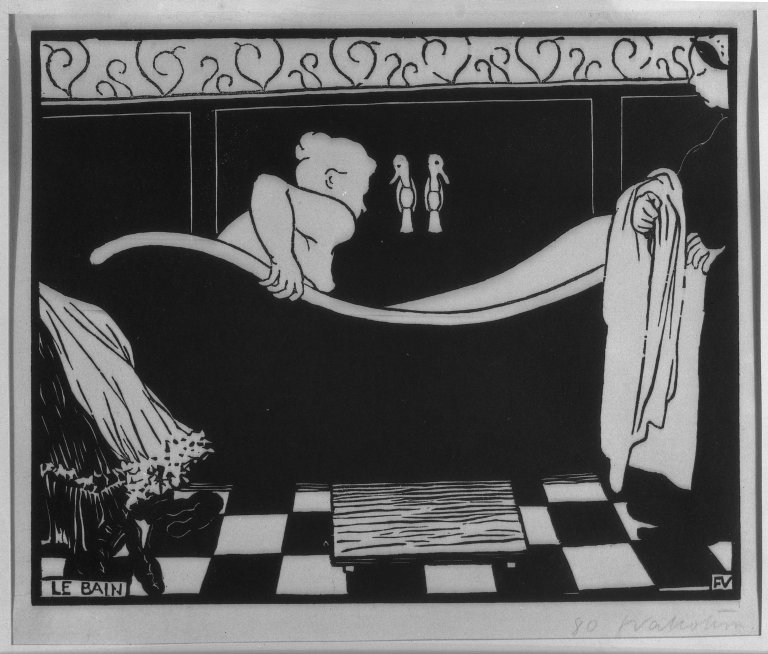
Félix Vallotton, Le Bain, 1894, xylographie, 18,1 x 22,5 cm (planche), Paris, Bibliothèque nationale de France, département des Estampes et de la Photographie © BnF, Dist. Rmn-Grand Palais / image BnF

Félix Vallotton, La Blanche et la Noire, 1913, huile sur toile, 114 x 147 cm, Winterthour, Fondation Hahnloser/Jäggli, Villa Flora © Fondation Hahnloser/Jaeggli, Winterthour
Félix Vallotton, Le Chapeau violet, 1907, huile sur toile, 81 x 65,5 cm, Winterthour, Fondation Hahnloser/Jäggli, Villa Flora © Fondation Hahnloser/Jaeggli, Winterthour
%20Felix%20Vallotton%201ax.jpg)
Félix Vallotton, Le Retour de la mer, 1924, huile sur toile, 81 x 100 cm, Genève, Musées d’art et d’histoire de la Ville de Genève, don de la Société auxiliaire du musée, 1929 © musées d'Art et d'Histoire de la Ville de Genève / photo Bettina Jacot-Descombes

Félix Vallotton, L'Enlèvement d'Europe, 1908, huile sur toile, 130 x 162 cm, Berne, Kunstmuseum Bern, don du professeur Hans R. Hahnloser © Kunstmuseum Bern

Félix Vallotton, Dans les ténèbres (C'est la Guerre ! VI), 1916, xylographie, 17,7 x 22,5 cm (planche), Paris, Bibliothèque nationale de France, département des Estampes et de la Photographie © BnF, Dist. Rmn-Grand Palais / image BnF
Félix Vallotton, L'Homme poignardé, 1916, huile sur toile, 97 x 131 cm, Winterthour, Kunstmuseum Winterthour, don du Dr Arthur Hahnloser, 1917 © Schweizerisches Institut für Kunstwissenschaft, Zürich / photo Jean-Pierre Kuhn

Félix Vallotton, Verdun, 1917, huile sur toile, 114 x 146 cm, Paris, musée de l’Armée © musée de l'Armée, Dist. Rmn-Grand Palais / Pascal Segrette arts council